Review written by Ian Dunmore (@Torq)
Introduction
The Schiit Modi 3 is Mike Moffat’s (the digital-guru at Schiit in California) latest entry-level desktop DAC offering. Coming in at the same $99 price point as the preceding USB-only Modi 2, it now includes the S/PDIF COAX and TOSLINK inputs - options that were formerly reserved for the more expensive Modi 2 Uber - as well as a revised power supply design.
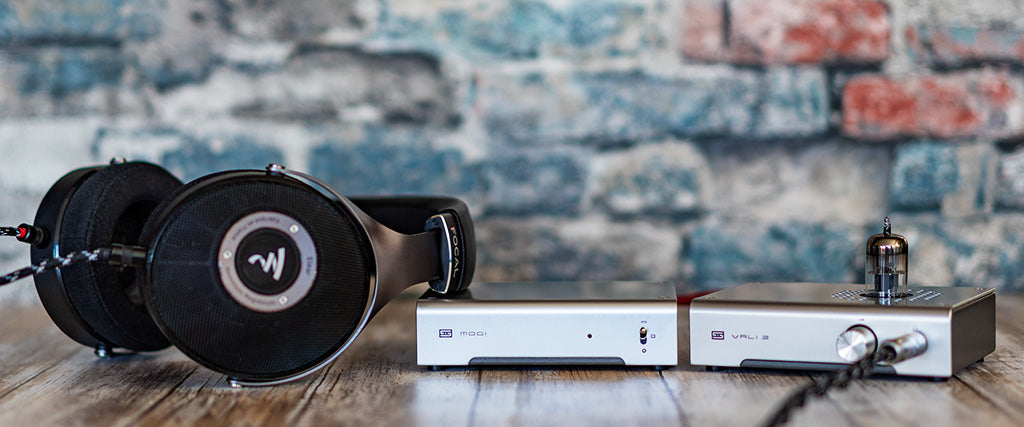
The Modi 3 that I am reviewing is on kind loan from Schiit Audio.
The target market for this little guy is to improve, or externalize, the sound from an existing computer audio solution, sound-card, or a tablet or other mobile device/phone. Its flexible input options also mean it can also readily be paired with CD players/transports, game consoles or other AV devices.
Features
Modi 3 is a very simple DAC - it supports PCM only-replay via any of three, manually switched, inputs - specifically USB, and then TOSLINK and RCA S/PDIF connections, along with a pair of options for powering it. The unit remains powered as long as the USB port it is connected to has power. If you want to make this switchable you can use a switchable cable like this or a switchable adapter like this. Personally, I would just leave the thing powered on all the time.
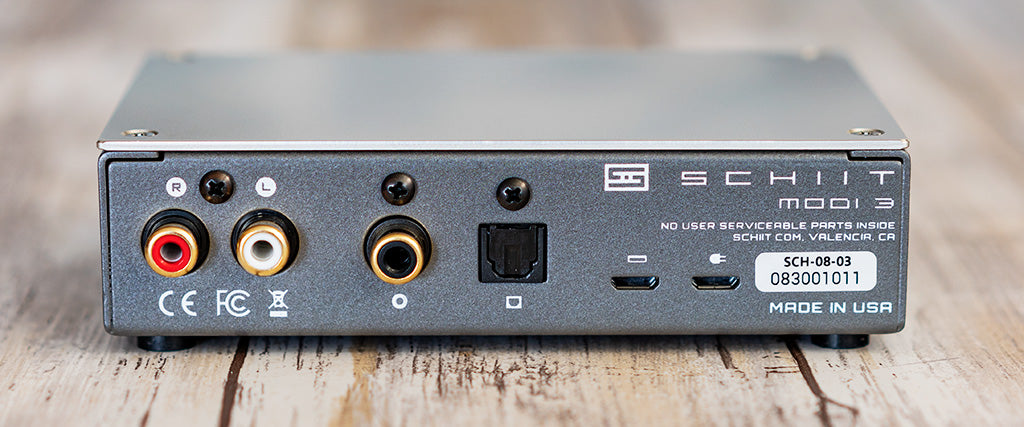
Format support is for PCM bit-depths/sample rates from the CD-standard of 16-bit/44.1kHz up to 24-bit/192kHz on all three inputs. While some other affordable products with TOSLINK inputs exhibit issues above 24-bit/96kHz I found no issues here from a variety of sources, ranging from dedicated transports and desktop computers to digital audio players and adapters. There is no native DSD support - you’ll need to convert to PCM on the fly in your player or source.
Review Equipment & Material
Headphones used for this evaluation include: Focal Clear and Elear, Sennheiser HD650, HD660S, Massdrop x AKG K7XX, Fostex TR-X00, HD6XX and Elex.
Other components used in this review include the Schiit Audio Vali 2 (tube-hybrid) and Magni 3 (solid-state) headphone amplifiers/pre-amps, their Modi Multi-Bit DAC, Loki tone-control/four-band EQ and Eitr USB-to-S/PDIF converter, Massdrop x Cavalli Tube Hybrid and Cavalli Liquid Carbon X amplifiers and an iFi Audio iPower 5v PSU.
The majority of the music I use in my evaluations is in “Red Book” CD format (16 bit, 44.1 kHz), most of which comes from CD rips; an initial playlist for my audition listening can be found here. The Modi 3 does not support native DSD playback, so no DSD content was used.
Build & Package
As with all Schiit products, the packaging is simple, plain and frill-free. A sturdy, plain, white cardboard box contains the DAC, a standard USB-A to micro USB-B cable and a compact, two-pin 5v + 1A switching USB power-supply.

The included power-supply is small enough to sit sideways on a power-strip and only take up a single socket. It is only required if you are using a non-USB input or driving a device that cannot provide sufficient USB power (e.g. some mobile devices).
Device Power & Compatibility
Modi 3 has two USB inputs, one for power and signal, the other just for power. For standard USB operation from a computer, or other fully USB 2.0 compliant source, you can simply connect it to a USB port with the included cable and be good to go. If you want to use the S/PDIF RCA or TOSLINK inputs, then you will need to connect the supplied USB wall-wart, or an appropriate alternative to the power-input.
If you’re using a device like an iPhone, that limits power-output on its USB connection (via the Lightning to USB adapter), you an also use the USB power input to power the Modi 3. In this case, connect the power before you attach the DAC to your iPhone.
Operation is driverless on macOS, Linux and Windows 10 (Creator’s Edition and later). Drivers are provided for earlier versions of Windows.
Alternate External Power Supplies
Since the Modi 3 has a dedicated power-input, using a micro USB termination, it is possible to use power supplies other than the SMPS USB wall-wart that Schiit includes. In doing so, bear in mind that the Modi 3 has an internal SMPS as the first thing encountered after the power-input, so using an expensive external linear power supply is still going to result in power going through a switcher.
In listening tests, I could discern no difference at all between a simple direct USB connection, a powered USB hub, the Schiit supplied wall-wart, an iFi iPower 5v or my high-end linear lab-supply.
DAC “Signatures” & Reference Designs
Spend enough time auditioning DACs, especially the more affordable units, and you start to develop some familiarity with the fundamental signatures that accompany them. These signatures are as much a result of the DAC ICs themselves, as the overall implementation that surrounds them. Most units around the $100 mark are fundamentally reference designs, closely (or exactly) following the manufacturer’s data-sheet implementation, and using every built-in capability of the chipset they can (ASRC, filtering, re-clocking/jitter management and format conversion etc.) in an effort to reduce cost and complexity elsewhere. And as a result these latent “reference” signatures are generally most recognizable in the less-expensive units that typically have minimal differentiation in their execution.
The practical upshot of this is that taking two using the same DAC IC, at this end of the market at least, isn’t likely to yield much of an overall difference in signature (technical performance is another matter). That’s not to say they’ll sound identical - but tweaks are largely kept down to minor changes in component values or brands and board layout - and while these do have effects, they’re usually not sufficiently large to fundamentally change the nature of the reference design and thus nor the resultant signature.
If you’re skeptical about the existence of, tuning for, such an innate signature, be aware that some manufacturers make them a specific part of their design philosophy and subsequent branding/marketing. AKM, makers of the DAC chip at the heart of Modi 3, are one such manufacturer, with the 4490EQ chip used here being part of their “Velvet Sound” tuning/family.
Sound
Modi 3’s general presentation is smooth and refined, with solid tonal density/weight and a good sense of definition and clarity. It learns towards being relaxed or laid-back but does so without giving up any sense of energy or drive to its rendition of music. A little extra roundness in the lower registers comes across as additional bass weight, however there is no sense of “thickness” or “slowness” to the sound, and as I’ll come back to shortly - bass articulation and agility is excellent.
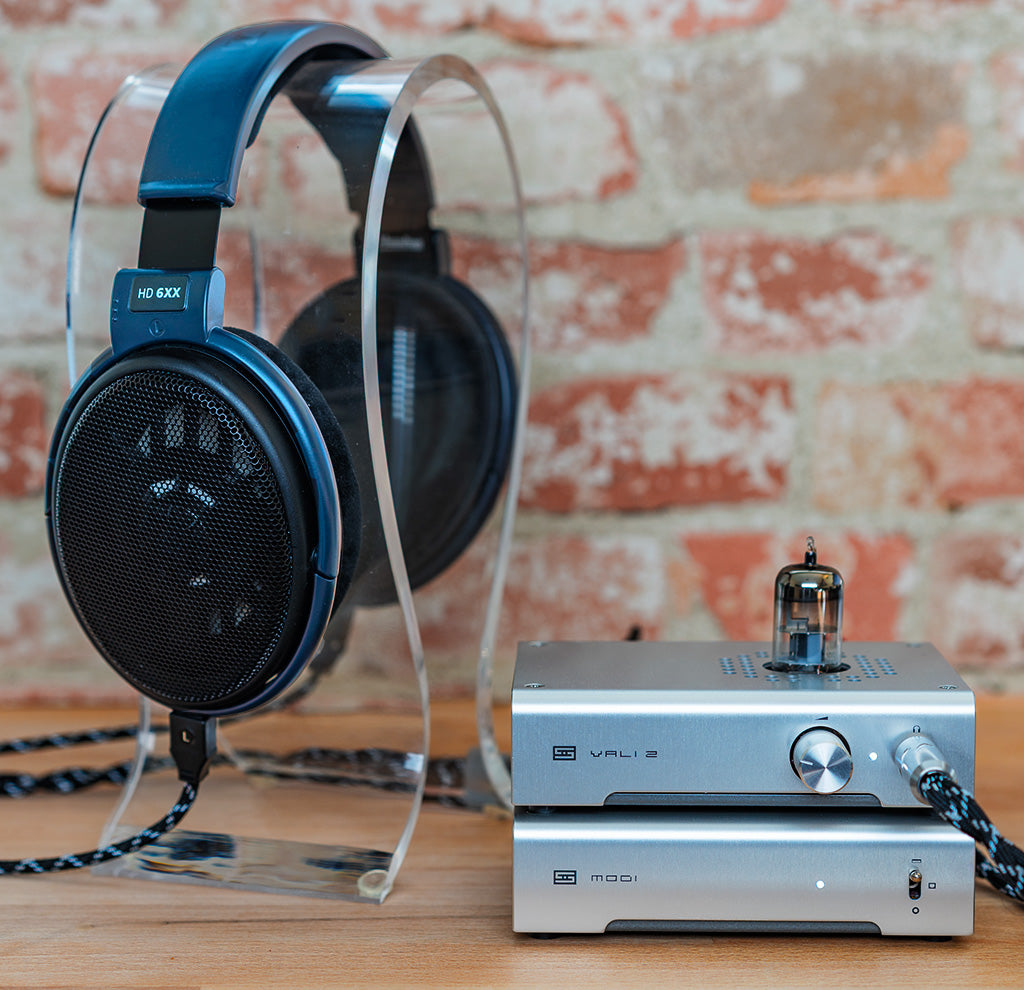
These are all typical characteristics of AKM’s “Velvet Sound”, which is definitely recognizable in the Modi 3, and tends to result in a DAC that will exhibit generally superior synergy with less-expensive solid-state amplifiers (which often exhibit brighter/less-refined treble regions). The Modi 3 is no exception here, and is a very pleasing complement to both Schiit’s own Magni 3 as well as the Massdrop Cavalli Liquid Carbon X (neither of which is best paired with a bright or harsh source).
Compared to some earlier AKM-based DACs like the first generation Schiit Bifrost (AKM4399) or the original Modi (AKM4396), the Modi 3 exhibits a less aggressive transient response - most notable with plucked strings or staccato bursts of percussion - but actually winds up sounding more natural, and less overwhelming of sustain/decay for super-short notes/strikes than the earlier models. The overlay of rapid percussion over much deeper drum tones, all the way in to sub-bass growl and reverb, while keeping all elements distinctly, and individually discernible, in David Feslyian’s “Drum Warfare (“Elimination) provides a very convincing demonstration - and it is much easier to hear what I mean here than for me to try and describe it. This particular track also does a good job of show-casing Modi 3’s bass articulation - with definite tone in the lowest notes not just a simple, repetitive, growl.
Vocal tones are natural and nuanced, with good presence. Shoutier, higher-pitched, female vocals do not exhibit any additional sibilance than what is native to the recording, and remain as composed as they can without the DAC editorializing things inappropriately. Annette Strean’s tense, excited, uprising vocal delivery of the first chorus in “Soul Sloshing” (Venus Hum, “Big Beautiful Sky”) is often rather uncomfortable with entry-level converters (and a depressing number of higher-end units too), but is handled with grace and aplomb here - and yet without losing it’s natural edge. This is fall-apart territory for more budget-DACs than it isn’t.
For some reason, when reviewing DACs in the same bracket as the Modi 3, I tend to start off with, and sometimes focus on, contemporary music. But none get to escape the gauntlet that is the Jessye Norman rendition of Bizet’s “Carmen”. Schiit’s latest baby-DAC captures, and portrays, the full range of energy and emotion in this production entirely convincingly. I did the first run through with the Modi 3 feeding a Vali 2. Two hours and thirty nine minutes later … despite the emotional rollercoaster this piece will take you on with a good chain, I wanted to do it again. This usually only happens with TOTL gear, and not particularly often even then. But when that particular bolt of lightning strikes, I can’t resist it. So I didn’t - and indulged myself again - this time with a Magni 3 in the supporting role. Which left me drained but happy. And with the sense that the Modi 3 can out-resolve the Vali 2, and might be a slightly better tonal match with the Magni 3, but that both pairings are rewarding and accurate enough for it to come down to personal preference.
Instrumental timbre is rich and satisfying, with the hum of a violin’s body being suitably distinct from a viola, guitars are vividly different from the dulcimer, and the discordancy present in both piano and brass when played forcefully and at their limits prompting a suitable sense of edge, while maintaining an unexaggerated level of bite to horns and strings.
Dynamics are handled well … orchestral pieces swell and peak, then drop to nothingness, with an appropriate level of drama, contrast and even surprise (with new pieces). Lower-level, micro-dynamics, are a little behind the macro-dynamics though. This is most notable in slight vocal inflections, and “gravel”, especially in deeper baritone and true bass deliveries with male voices - but also with complex bow-work and virtuoso-level piano. I am, to a certain extent, “picking nits” or “splitting hairs” here - while the Modi MB does deliver better micro-dynamic resolution/delineation, most price-competitive units are somewhat behind the Modi 3, and it requires suitable source material and knowing what to listen for to even pick up on this. The problem is, once you do, you’ll be aware of it every time it is NOT present.
Modi 3 can deliver addictive levels of slam (if perhaps not quite at multi-bit levels of raw impact) - try “Never Mind” (Infected Mushroom, “Army of Mushrooms”) - and still pirouette into a detailed, nuanced, delicate delivery of something like Mary Black’s “Carolina Rua” or “Ellis Island” … and the contrast between raw, electronic, savagery and simple, pure, acoustic tone is quite startling.
It persuades emotionally, and impresses technically, with realistic timbre, a beguiling, if slight, sense of creamy-smooth-richness, and solid resolution. And it does it without getting confused, nor congested, even in complex works. Air and space are maintained when present in the recording, with only natural sparkle and no added “zing”.
Bloody marvelous.
USB vs. S/PDIF
The easiest way to drive, and power, Modi 3 is simply to connect it via USB to your source. And in this mode it works extremely well. But one of its major upgrades over the Modi 2 is that it now incorporate S/PDIF input capability - either over TOSLINK (optical) or via a 75 ohm RCA connection.
Is this something worth pursuing?
While there was an improvement in the sense of “blackness” to the already coal-black background, and a can-just-hear-it-if-you-really-focus improvement in micro-dynamics when fed via S/PDIF vs. USB, I don’t think the improvement is worth going out of your way to exploit. Unless listening for specific things, at the expense of any level of appreciating the musical-whole of a piece, I could not tell the difference between Modi 3 via USB and when fed via a Schiit Eitr. Which is to say that Eitr does yield an improvement - just not one that’s worth anywhere near 1.5x the cost of Modi 3 itself.
Save Eitr for Modi MB, or other DACs saddled with poor USB implementations.

Now, if you have a particularly noisy USB port/hub then you may get much more mileage out of Eitr, but in my system the improvement was so small that you would be far better served simply by buying a Modi Multi-Bit instead of a Modi 3 and an Eitr.
Synergies & Recommended Systems
I am a big believer in “system synergy” - specifically that you can combine modest components and come up with something greater than the sum of its parts, as well as pair absolute flag-ships and still be left wanting. To that end, this is just a couple of configurations that I found fell into the former category!
Modi 3, Vali 2, Loki & Focal Elear
Out of the box, the Focal Elear has a somewhat wonky tonality; far too much bass, and an unduly recessed mid-range. Putting a Loki between a Modi 3 and a Vali 2 (or, I guess, a Magni 3), will let you dial down the bass, and boost the mid-range to the point that the Elear take on a fundamentally neutral character and are fully capable of exposing the technical capabilities of the Modi 3.
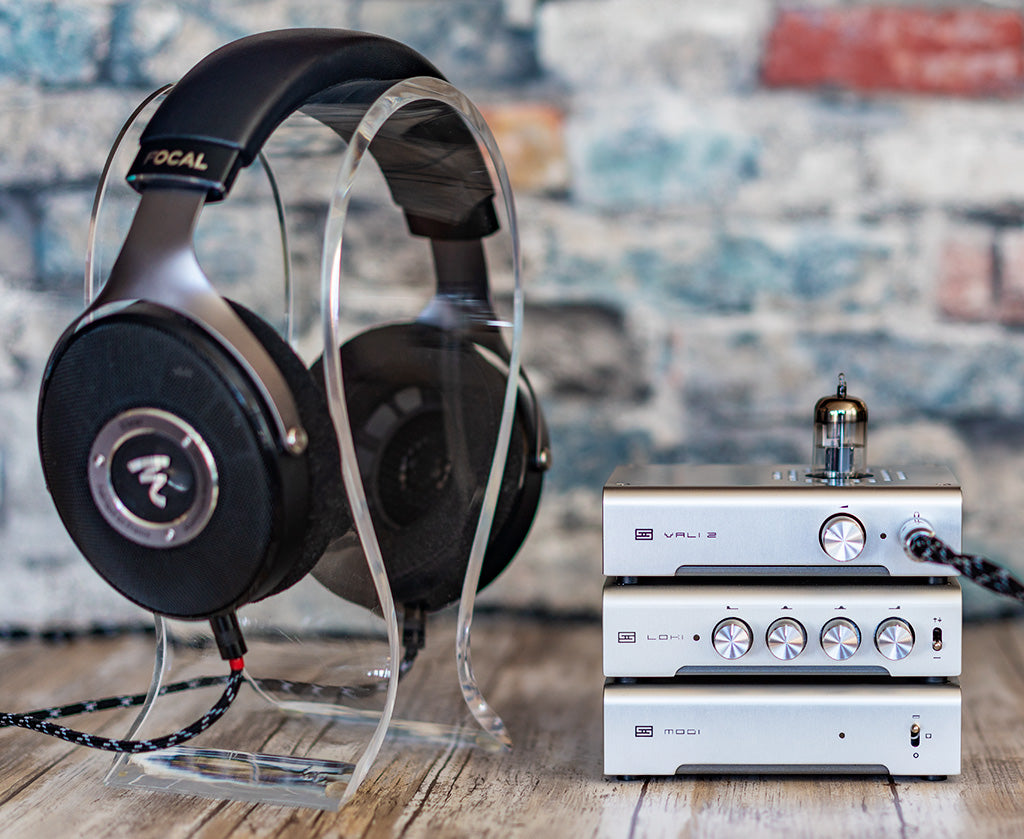
You could, of course do something similar with the Massdrop x Focal Elex and not require the Loki in the chain. I just happen to prefer the look and feel of the Elear over the Elex, so they tend to get more use (albeit I tend to use True-Fi to get the Elear to sound the way I want them).
Modi 3, Magni 3 & Sennheiser HD660S & HD650/HD6XX
The smoothness of Modi 3 helps to tame the slightly steely top-end of the Magni 3, and when fed into the HD660S, HD650 or HD6XX results in a natural, highly-resolving and very dynamic presentation.
I would go as far as to say that my current, preferred or “best performance-per-dollar” (bang-for-buck) setup, and the one I will be recommending to people new to the personal-audio world for now, is a Modi 3, feeding a Magni 3, and driving either Massdrop x HD6XX or Sennheiser HD650.
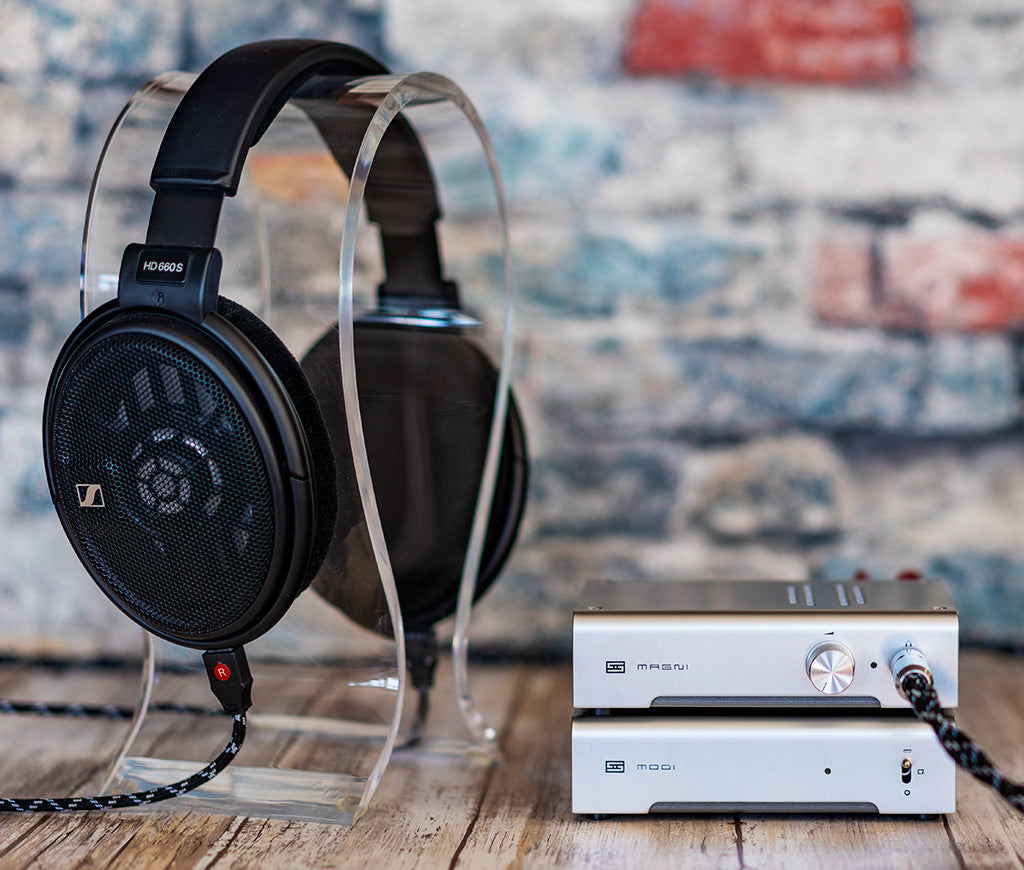
Other Possibilities, Scalability & System Building
I found the Modi 3 also paired well, sonically, with both the Massdrop x Cavalli Tube Hybrid and Cavalli Liquid Carbon X, edging out the color-matching, if different form-factor, Grace SDAC in those combinations. I would say one thing that was apparent here is that the Modi 3 has more to give than will necessarily be apparent when paired with components that are, nominally, similarly priced. This was apparent with both of the Massdrop/Cavalli amplifiers here, as well as when including higher-end headphones in the mix.
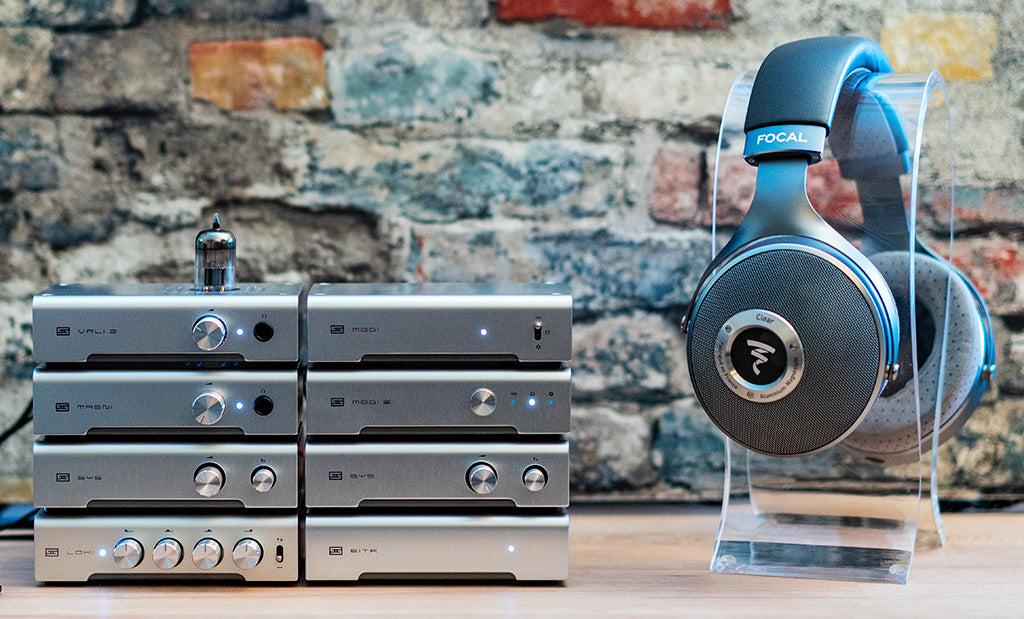
Differences in the audible aspects of DACs are generally a lot smaller than is the case with amplifiers or, particularly, with headphones. As such it is a common recommendation (and a I path I agree with) to focus the bulk of one’s initial budget on the headphones and then build around those. Because the law of diminishing returns sets in so quickly with DACs, you can often start with a good-sounding entry-level DAC and keep it through several headphone and/or amp upgrades before it will become an obvious weak link in a setup. The Modi 3 is likely to last longer than most in this scenario, before it becomes necessary/desirable to step up to something better, sideways to something different, or both.
Summary
Modi 3 is the best-sounding DAC in its price-class that I’ve heard to date. And on the lower side of $200 I am hard pressed to name anything else that can definitively beat it. Trade blows? Sure - in some places. Best it across the board? Nothing comes to mind.
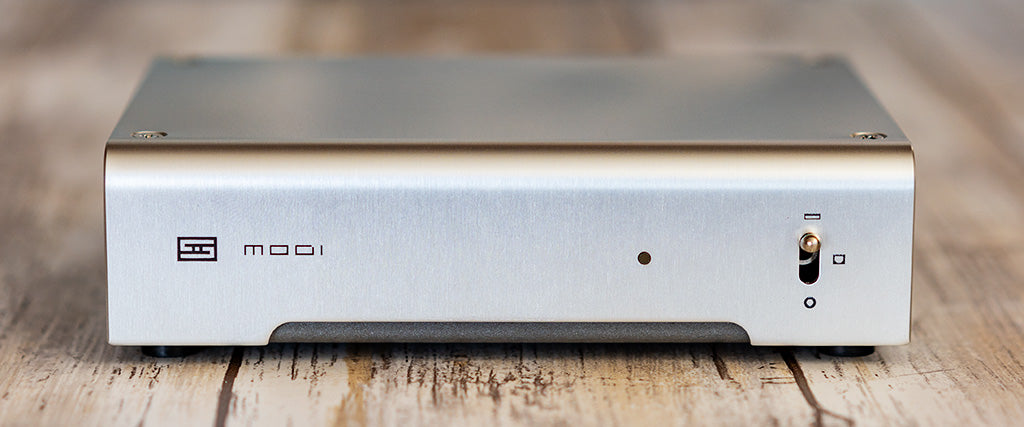
Now, with that out of the way …
The Schiit Modi 3 is both an excellent sounding and technically proficient little unit. Schiit claim it is their “best measuring” DAC to date, and I have no reason to doubt it. More interesting to me is the fact that Modi 3 represents the first time I’ve heard an entry-level DAC deliver a musical performance that matches the expectations set by test-bench results.
Modi 3 is easily the best sounding, most enjoyable and convincing DAC I’ve heard in its price-class - and will be installed as my new entry-level reference DAC.
Yes, this means that I will be buying one.
Absent a preference for a different signature, or perhaps as a result of oddities in system matching, the only reasons I can think of to buy something else at this level are either for an aesthetic match with other gear or because you have a need for native DSD replay. For me, DSD replay is not a major factor in my personal listening and the very limited native DSD catalog means I would rather buy a first-class PCM DAC and do DSD to PCM conversion in my player, than buy a less enjoyable sounding DAC that can handle both formats natively.
As a pure DAC, I would rare the performance of, and enjoyment from, the Modi 3 above that of its principal competitors (including the Grace SDAC, Topping D10 and D30, ODAC Rev B etc. and the OL DAC). And for desktop use, for PCM content, the Modi 3 + Magni 3/Vali 2 combination would, for me, trump the Nano iDSD Black Label; especially with more demanding cans - again unless native DSD support, or MQA decoding, was deemed important. For portable (or transportable) use, short of Schiit releasing a “Pile” to both house, and power, the Modi 3 + suitable amp, then the iFi Nano iDSD Black Label is an excellent and compelling alternative.
In short, the Modi 3 comes highly recommended and is, by some margin, the best entry-level DAC I’ve heard. If you're in the market for a compact, desktop, DAC then you definitely want this on your audition list.
-Ian Dunmore (@Torq)
---
Join the discussion about the Schiit Audio Modi 3 DAC at "The HEADPHONE Community".




4 comments
Ian (@Torq)
It’ll be easier to respond to you properly here:
https://forum.headphone.com/t/schiit-audio-modi-3-dac-official-thread/2108
Daniel
Could you compare how the Massdrop CTH and LCX sound with the Modi 3 and the SDAC?
Ian (@Torq)
It’ll be easier to respond to you properly here:
https://forum.headphone.com/t/schiit-audio-modi-3-dac-official-thread/2108
Daniel
Could you compare how the Massdrop CTH and LCX sound with the Modi 3 and the SDAC?
Leave a comment
All comments are moderated before being published.
This site is protected by hCaptcha and the hCaptcha Privacy Policy and Terms of Service apply.